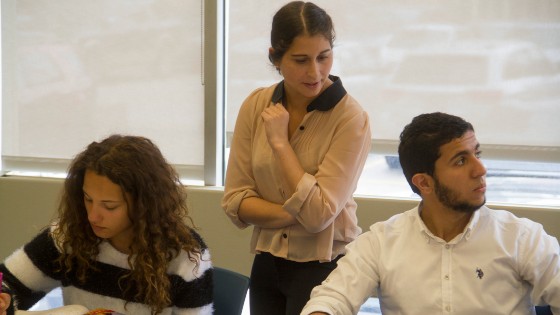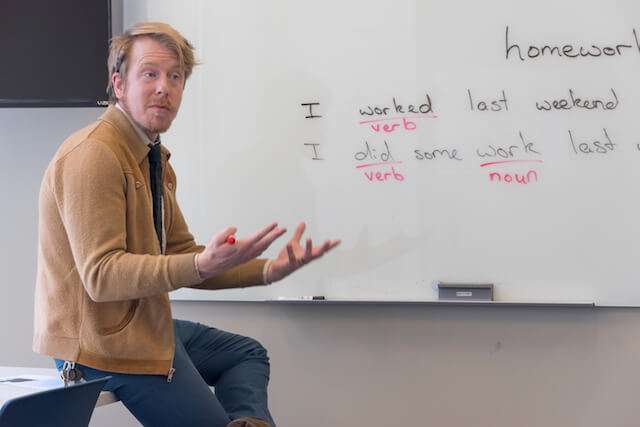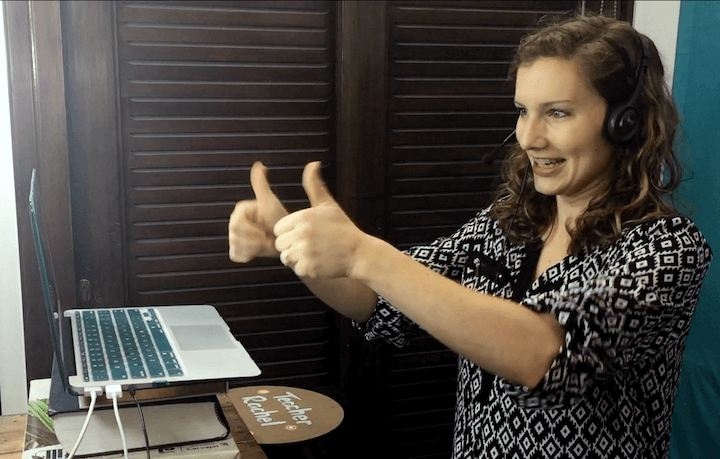What Is It When a Student Keeps Using a Correct Answer Over and Over Again
The Dos & Don'ts of Error Correction When Didactics English
By
August twenty, 2020

If yous've taught or tutored English language (or whatever linguistic communication), you've probably asked yourself on more than i occasion when, how, and even if, you should correct your students' mistakes. While error correction in teaching English mainly depends on whether your lesson objective is fluency or accuracy (more on this beneath), in any example, there are sure key things to know when it comes to effectively – and sensitively – correcting your students' mistakes in grade.
What is the difference betwixt an mistake and a mistake?
You might be surprised to learn in that location's a difference! All the same in educational activity English, a distinction is fabricated.
Mistakes
A mistake is an accident or a lapse, something that your EFL/ESL students actually know and that they can nigh likely self-correct if given the chance. This can be a typo, using the incorrect discussion, or a small grammatical error.
Errors
An fault, on the other hand, is something that your students don't know because they haven't learned it yet or they've forgotten it. This is where your students need you the nearly, in order to effectively right their errors and help them develop their linguistic communication skills.
What kind of errors practice EFL/ESL students make in class?
Students make many mistakes during the long effort of learning a new language. This is a natural and necessary function of the learning process! As a instructor, information technology helps to identify the type of error in gild to right it effectively and smoothly.
Productive skills errors
Errors in spoken or written skills include vocabulary, pronunciation, and grammatical errors, likewise every bit errors in producing intelligible language that can exist understood globally.
Receptive skills errors
Errors in listening and reading skills include misinterpretation of content, misunderstanding of words, or simply the inability to cover someone'due south speech in total.
Y'all'll acquire more nearly other types of errors students brand, such as global and local, in the tuition-gratis Micro-credential class: Mistake Correction in the EFL Classroom.

When should I correct my students?
The timing of correcting students' errors in educational activity English is crucial to your lesson being a success or a fail. Error correction in EFL/ESL has a big touch on on your students' learning process and the right timing will help them retain new information effectively.
When to correct errors in fluency-based lessons
If you're didactics a grade or activeness where fluency is the goal, endeavor to monitor your students and take notes of major or repeating mistakes. Don't interrupt your students' speech. This might discourage them or make them lose the motivation to speak freely. Salvage the mistake correction for the end of the class.
At that time, you lot can give individual feedback or discuss the most important errors with the whole class if your students are okay with that. You could as well prepare a quiz for the adjacent lesson, touching on the major errors that you noted down while monitoring your students.
When to correct errors in accuracy-based lessons
If you're teaching a class or action that aims for accurateness, for example applying a new grammar dominion during a conversation, you can correct immediately after the mistake has been made, assuming that information technology is a mistake nearly said rule. Since y'all simply taught the content, you lot tin can encourage your students to self-correct their error first, or you can inquire other classmates to help. Sometimes a gesture is plenty to indicate the type of error. Yous don't need to focus also much on mistakes students brand that aren't related to the current lesson, since this can over again disrupt their efforts to use the newly learned grammer.
If yous find during the activeness that your students are making the aforementioned errors over and again, you might want to finish the activeness, review the lesson content and resume the practice later making sure that all your students have understood the new dominion.
Dos and Don'ts of error correction
Here are some useful footing rules for error correction in the English language classroom, whether you're teaching online lessons or in a alive classroom. For more than detailed tips and tricks, cheque out the free Bridge Micro-credential course: Fault Correction in the EFL Classroom!
Dos

Dont'south
The importance of error correction in the EFL/ESL classroom
Nosotros learn past making mistakes. Every bit children, we learn how to walk by falling over hundreds of times. As adults, we learn a new language by making uncountable mistakes in the use of words, grammer, sentence structure, pronunciation, and register. The about of import matter for you every bit an English instructor is to correct your students' errors effectively and sensitively. Only then can you help them grow and develop their newly acquired language skills at their own stride and in a comfortable and safe environment.
Learn more about correcting students' errors effectively
If you're a new teacher and want to level-upward your teaching skills as well as learn more about error correction techniques in the classroom, showtime with the comprehensive Span Master Document TEFL/TESOL course.
If y'all're an experienced teacher, sign up for the free Span Micro-credential course: Error Correction in the ESL Classroom to develop additional skills, and you'll have the selection to earn a digital badge to show off your credentials on your TEFL resume and social networks!
Micro-credentials are only one of the complimentary resources that tin enhance your TEFL/TESOL resume.
Source: https://bridge.edu/tefl/blog/error-correction-teaching-english/

0 Response to "What Is It When a Student Keeps Using a Correct Answer Over and Over Again"
Post a Comment